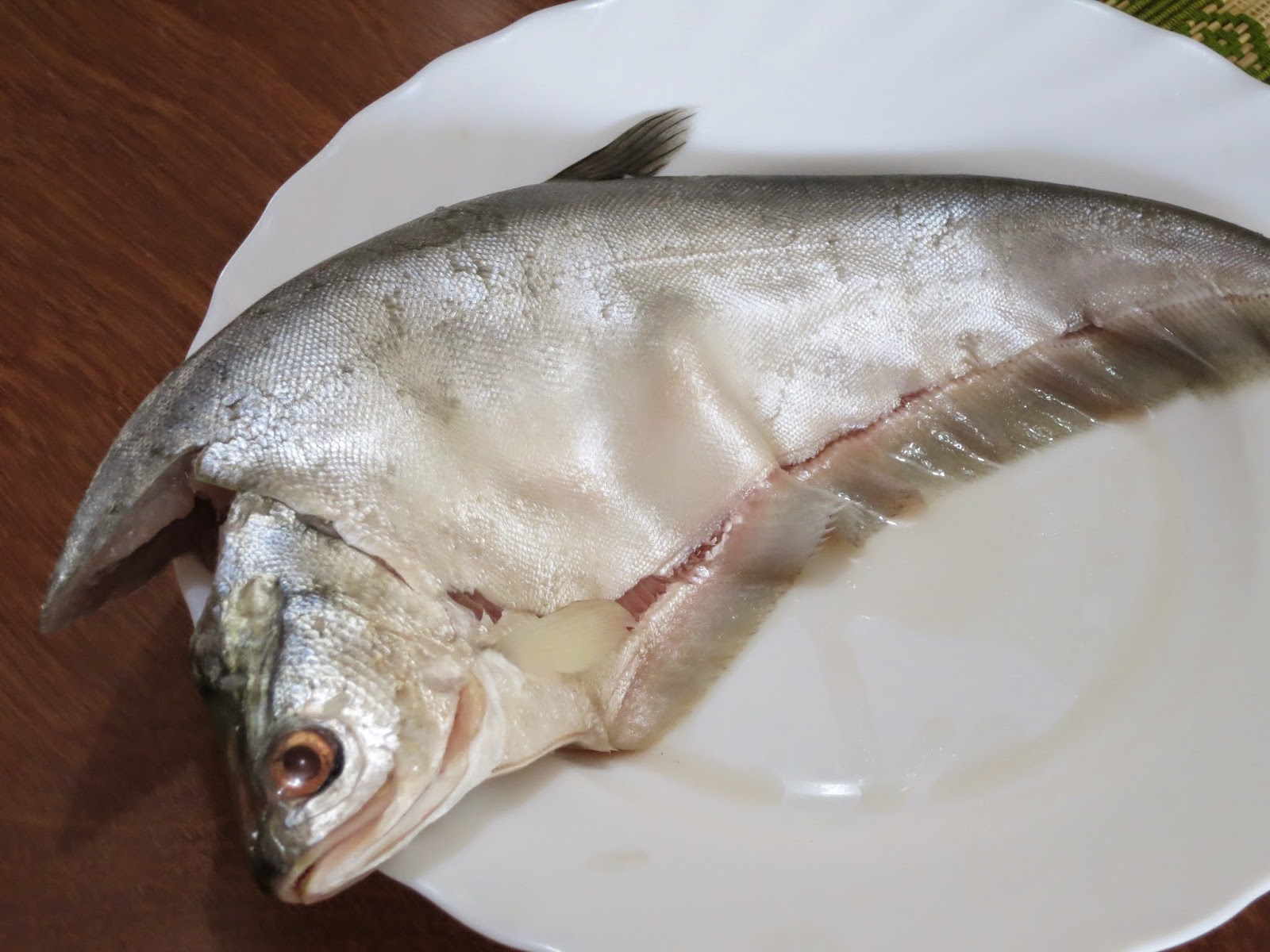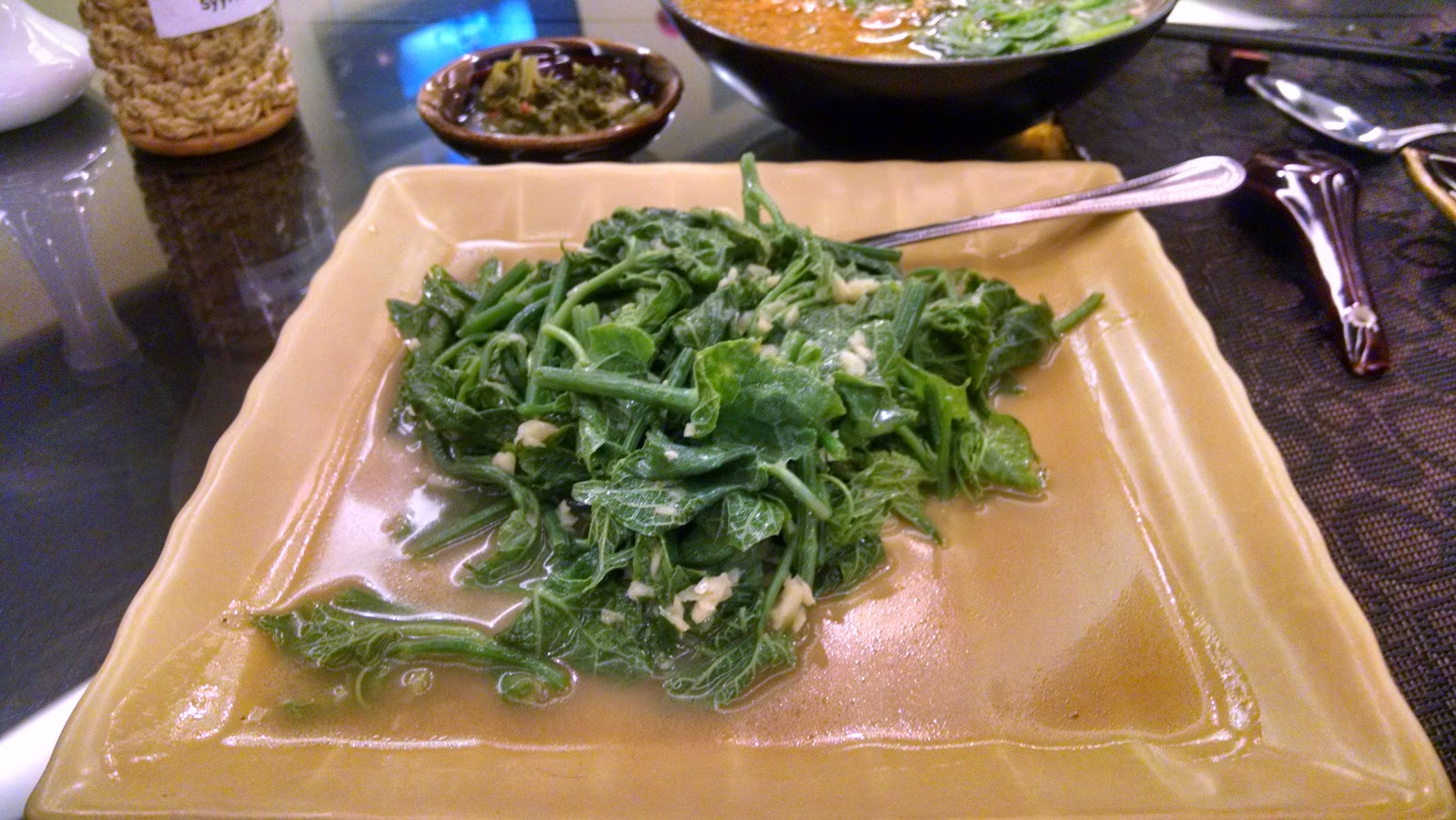The hotel I stayed at had a nice breakfast buffet. To accommodate the tourists and business travelers from all over the world, there were all kinds of dishes, from scrambled egg and bacon to porridge and miso soup. Of course, I ignored these dishes and went straight to the Myanmar food section. There were two kinds of breakfast noodles, Mohinga and Ohn-no khaut swei, which is coconut based chicken noodle soup. It's very similar to Thai Khao soi and Malaysian Laksa. Very yummy! I topped it with fried garlic and shallots. I had their mohinga also.,, By the way, there is no so-called onion in Myanmar. Locals call shallots "onions" instead because that's the closest thing they have.

After a big breakfast at the hotel, I went to one of the main events of this trip, cooking class!! The class started with a market tour. The market looked very local and lively. Again, the people were pretty shy but didn't seem to mind me taking pictures (I confirmed this first with the guide/cooking instructor).
Smaller banana, about 2/3 the size of what we have in the US.
Yellowish fish, does not particularly look appetizing...
I didn't see any "sea"food at the market. The instructor said Myanmar people usually eat fresh water fish/shell fish because all the "sea"foods caught at the sea port (Myanmar has pretty long coastline) are for export and taxed. If locals want "sea"foods, they have to pay the after-tax price. That's sad...
After the market tour, we stopped by at a nearby café. The instructor ordered mohinga. I was pretty stuffed from the huge breakfast at the hotel but didn't say anything because I didn't want to miss the opportunity to have another mohinga. It was pretty good but I like the super cheap mohinga that I had in Bagan the best so far.
Now, it's time for cooking. The class was held at an apartment that is both their office and kitchen. Including myself, there were three students. We had 5 dishes to make.
Base curry paste, they used non-spicy chili. I guess they went easy for us. I wish they didn't...
Salt and turmeric rubbed onto tofu. Turmeric is one of the key ingredients in Myanmar foods
Cleaned at the market. Interesting way to cut fish.... Very soft flesh.
First dish (condiments?) was tomato sauce with the curry paste. It was quite salty. I don't know whether this was by accident or deliberate. In general foods in Myanmar are pretty salty. Many local Asian dishes are much saltier than what we usually have in the US because it's meant to be eaten with steamed rice. So, probably this saltiness is the way it's supposed to be??
The second dish is a chopped veggie salad tossed with ground peanut sauce. This was one of my favorite dishes.
This is all time my favorite veggie, water spinach (which the instructor called 'water cress'). The stem part is hollow shaped. It has some distinctive crunchiness if cooked right. This is supposed to be a cheap green vegetable (almost like weeds) to those in some part of Asia. But this is somewhat exotic to me. Simply prepared with oil and garlic. Very good!
This is the most unique and tasty dish that we made. It is fish cake curry. The flesh from the weirdly cut fish is made into cakes with the curry paste we made earlier. Normally I would need some sort of binder to make fish cakes but the fish flesh was naturally sticky. So, I didn't need to add anything else. The sauce is made with the curry paste and tomato.
This is duck egg curry. The duck eggs look about the same size as chicken eggs but the yolk has more orange-ish bright color. It was a bit challenging not to break the egg yolk when I was stirring the skillet..
The instructor and her assistants/stuff are very nice. Very homey feeling. I had a very pleasant time here.
As soon as I finished the class, I headed to the airport to fly to Bangkok, Thailand. I'm planning to take another cooking class in Bangkok.
When I left Yangon in the afternoon, it was pretty warm. But when I arrived at Bangkok in the early evening, it was like a sauna.... It was still quite warm and very humid.... I managed to get to a restaurant that I checked out before I arrived at Bangkok. It wasn't very crowded and the server wasn't friendly at all. But the foods were very good.
Especially the first dish is something to remember for a long time! It is pomelo salad with pork, topped with mint leaves. Sweet, tangy and spicy, amazingly balanced flavor. While fried shallots on the top give it depth, the pomelo makes the entire dish light and very refreshing. I'm going to make this myself once I get home. I don't know if I can recreate the same flavor, though..
When the server asked "spicy?" I said yes, hoping he'd bring the authentic green curry. He did not disappoint me! It was very spicy but without losing the balance (some spicy foods are almost bitter...). Very strong basil taste. I don't know if the curry paste has logs of basil or the local basil is stronger than American grown Thai basil. Anyway, it was very good
I asked for Tom Yam Koon (clear shrimp soup). But it seems it's a bit creamy and I did taste coconut. But it's not as creamy as Tom Kha (coconut soup). I'm not sure if this is supposed to be Tom Yam or Tom Kha... Nonetheless, this is so good! It was pretty spicy to begin with. But as it sat, it kept getting spicier. All the heat extracted more capsicum... I couldn't finish the soup because it became a bit too spicy. Next time, I'll finish it as soon as possible!
Stir fried minced chicken with basil. It was pretty spicy but sweet also. Again, a very strong basil taste.
Thailand is very close to Myanmar and they share lots of same ingredients. However, the way they season foods is so different. Everything is stronger in Thailand. Tomorrow, I'm looking forward to see the difference at the cooking class.






















































